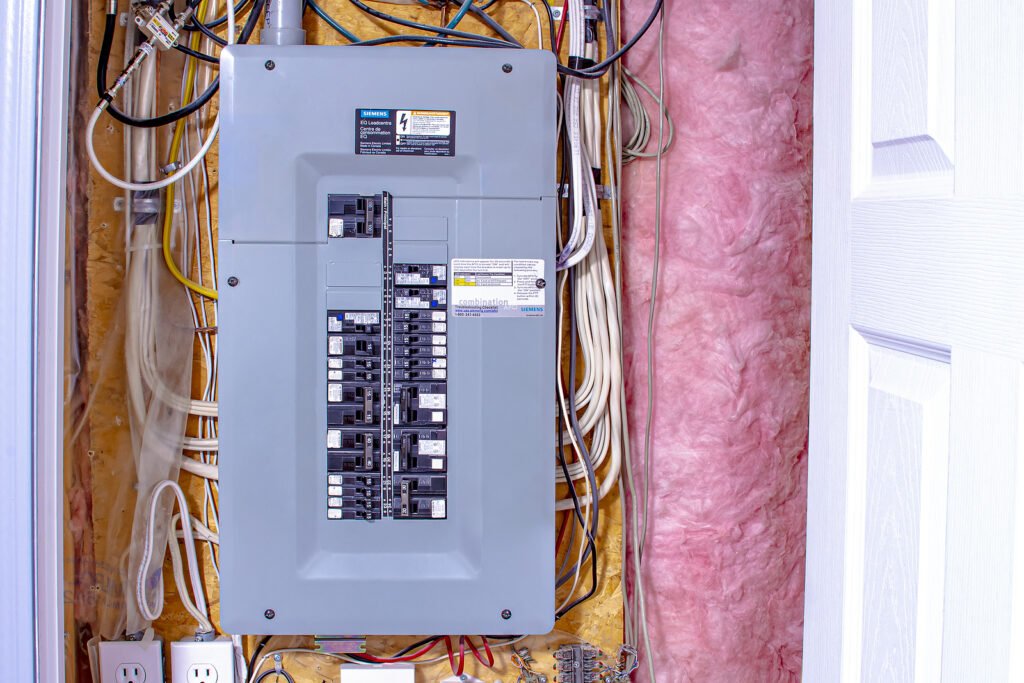Homeowner Electrical Panel Upgrade Guide

Albuquerque homeowners, listen up! Want to up your home’s worth? Sure, you do! There’s an often-overlooked upgrade, the electrical panel. This small change can bring big benefits.
Regular upgrades are a must, and here’s a handy guide just for you.
When do you need an upgrade? Sometimes it’s tricky to tell. Other times it’s crystal clear. That’s because the signs can vary. But don’t worry, we’ve got the lowdown.
When to Consider an Electrical Panel Upgrade?
Is it time to think about an electrical panel upgrade? In modern New Mexico houses, an electrical panel usually outlasts your stay. It’s likely to work well for 25 to 40 years, sometimes even more. But things can change. It’s not the age, but the wear and tear that could cause the problem. Sometimes, your home’s needs may surpass your panel’s ability. In both cases, an upgrade to your panel is a smart move. Here are some clues that your panel may need a makeover.
Your Home Has a Fuse Box
Got a house from the 1960s or earlier? If yes, you probably have a fuse box. In that case, it might be time for an upgrade. Fuse boxes can be trouble. The smallest issue? The fuss of changing blown fuses all the time. But there’s a bigger problem. Some people use shortcuts to avoid changing fuses. These tricks often lead to lasting damage to the panel.
Frequently Tripping Breakers
The job of circuit breakers? To cut off electric current when power overshoots.
This happens sometimes when there’s a sudden surge. But is it happening too often?
If yes, it’s a sign. You might have a damaged or overworked circuit. In homes filled with electric gadgets, if one circuit’s overloaded, others likely are too.
It’s time to rethink your panel setup. Create more circuits. Lighten the load.
Under Coded Electrical Outlets
Now to the outlets, the modern electrical standards demand two things:
- Every outlet must have a ground
- Outlets near water sources need to be GFCI-enabled (safety first!)
Anytime you add grounds or install special outlets, leaf through your panel too. Why? Older systems usually have dated panels. These might be nearing their retirement. Updating the outlets?
Might as well spruce up the panel too! Double-checking can’t hurt.
In fact: Keeping up with modern standards can make your home safer and increase its worth – a bang for your buck.
Signs of Electrical Wear and Tear
Stay alert for signals of wear and tear in your electrical system. A stitch in time saves nine! Watch out for these signs:
- Does a burning smell waft from your panel or outlets?
- Are your lights flickering, blinking, or dimming unexpectedly?
- Noticed any discolored wall plates or scorch marks?
- Hearing crackling, buzzing or sizzling noises from receptacles?
- Do sparks shoot out when you plug in appliances?
- Feeling a mild shock from receptacles, appliances, or switches?
Such symptoms are calls for attention. Take notice, take action.
Adding New Service or Appliances
It’s quite common to add new services or high-power gadgets to existing systems. You might need to add new circuits if renovating your home, sprucing up your basement, or electrifying a shed or garage. Changing old appliances, or getting new ones, could also ramp up your home system’s power usage, straining the existing setup.
Multiple factors might make you ponder an upgrade. The good news? Upgraded doesn’t always mean a complete system replacement or a total panel turnover.
Upgrade 1: Individual Circuit Breakers
Circuit breakers can get tired out early. They may need to be replaced. Overload, surge damage, or ground faults can hasten this. Pros can spot the worn-out breakers and the reasons behind their early retirement.
Upgrade 2: Panel Replacement
The panel itself might need a replacement. This does not mean an upgrade in the service to your home. But the causes are often similar to those of individual breaker replacement. The distinction here? The master controls for the panel have gone faulty. This issue often stretches beyond a single breaker. Signs to watch out for include scorching within the panel. This signifies dangerous arcing. Notice any damaged wiring or melting plastic on breakers? These are urgent signs: you’re teetering on the edge of potential hazards. The fix? A complete panel upgrade to ward off personal harm or severe property damage.
Upgrade 3: Upgrade Service
Houses built in the 1990s usually had just 100-amp service. Picture that era: very few home electronics. No smartphones, tablets, laptops, or battery backups. Fast forward to today: almost everybody in a home has three or more of these devices. These gadgets add to the electrical load, taxing the system.
Upgrading the service from 100- or 150-amp to a common 200-amp is a usual matter in today’s homes. This change meets modern needs perfectly. The upgrade includes not only a better service line but also an updated panel. The circuits within your home get an overhaul too. This ensures they can take up and distribute the new, improved service efficiently.
